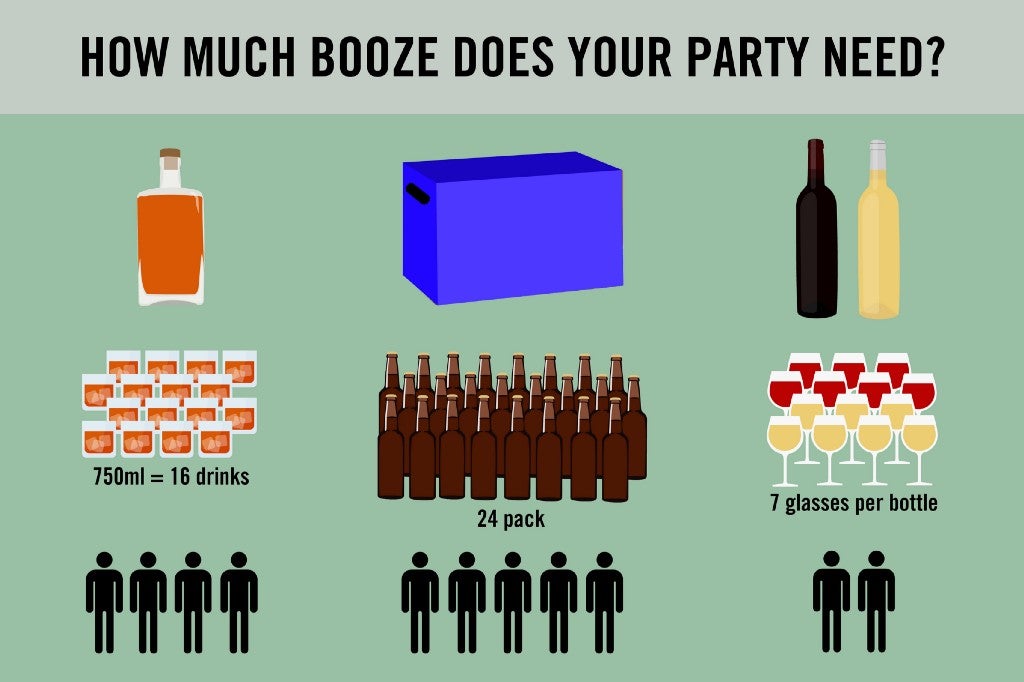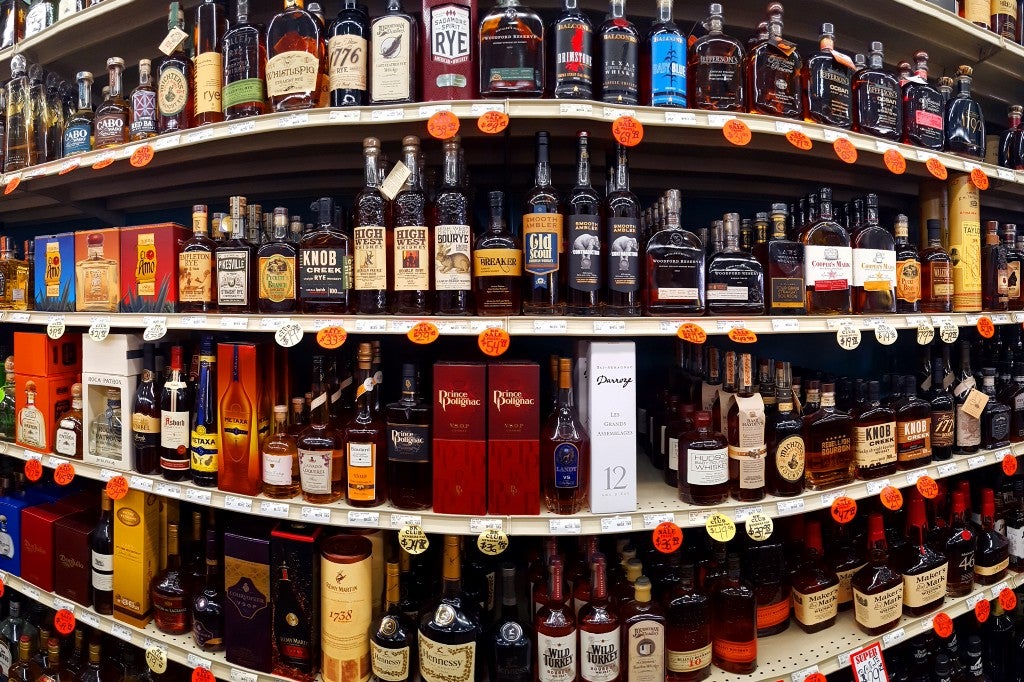Breaking down and cleaning up a bar at the end of the evening is time-consuming, sticky work. Where I’ve worked in the past it could take — from last call to the time we sat down to count our tips — anywhere from an hour to three times that long if it was a particularly busy night; if the guests sitting at Table 405 (it was always fucking Table 405) wouldn’t leave until management forced them out; or if my coworkers and I were more than halfway in the bag ourselves.
A lot of this work is physical: Taking out the trash, wiping down bottles, putting away syrups, scrubbing surfaces, but “The List” is all brainwork. “The List” is a tally of how many cans of beer, bottles of wine and bottles of hard liquor we sold through and would need to be restocked from our liquor storage room, which was inconveniently far away, the next day. It is, for the most part, fairly simple — count how many bottles/cans are needed to fill the holes on the shelves.
There is also, however, a fair amount of foresight required to predict what else we might need to have on hand (bridal shower coming in at 7 p.m., get all the rosé), and what we could run out of (it’s cold outside, people have been plowing through bourbon). Overstocking is a problem (there’s only so much room on a bar), but running out of something in the middle of a rush can send an entire night into a tailspin.
Making “The List” was one of my least favorite things to do — it’s stressful, trying to guesstimate the alcohol needs of a big, thirsty crowd.
Those of you hosting parties for the Super Bowl this weekend know exactly what I’m talking about. The pressure in this case seems extra high because of the age-old party-throwing conundrum of which is the lesser of two evils: Running out of booze, or having a shit-ton of it left over (especially when it’s three cases of Bud Light or five gallons of Bloody Mary mix you’ll never drink)?
There are a lot of ways to solve this problem: BYOB, a sign-up sheet, hiring a professional party planner, buying one of everything and forcing leftovers on your guests, but the easiest, least obnoxious and most affordable way to cover all your bases without giving up a shelf in your pantry to half-drunk bottles of booze for the next several months goes a little something like this…

Know Your Crowd
One of the benefits of hosting a party is that, unlike those of us working in restaurants, you know who’s going to be there. You can, therefore, sketch a rough outline of what kinds of drinks (and how much) you need to stock up on.
So, first: What do your friends like to drink?
Do most of them drink beer, but will drink hard liquor if it’s around? Vice versa? Are there a handful of people who aren’t beer drinkers and will be bummed if there’s no other option? How many wine drinkers will be in attendance?
Start with who likes drinking what and then, if you’re still struggling, look at it in terms of who will drink what.
Next, how much do these people drink?
You don’t have to get scientific about it, I have a few more nuanced suggestions about quantity below, but overall, are your friends into having some drinks while watching football or are you all getting together to get wasted while the TV is on in the background?
The answer to that question is actually more important than the math that follows.
Cover All Your Bases (But Don’t Overdo It)
Let’s say that after taking a scroll through your mental Rolodex of your friends’ drinking proclivities, you’ve determined that about two-thirds of your guest list is beer drinkers, but will appreciate and partake in hard liquor if it’s around, and the final third will drink anything but beer.
When we host private events at work, the host (aka the person picking up the tab) has a few different options when it comes to what kinds of drinks will be made available to their guests. One is an open bar, all access, order whatever you want, just don’t embarrass yourself. The other designates a selection of beer and wine, and if people want, they can pay for their own cocktails.
For the latter (usually rehearsal dinners and holiday parties) the host picks two kinds of wine — a red and a white — and nothing too eclectic. Gamay is a popular choice for red because it’s light-bodied (i.e., it goes down easy), but not too fruit forward or earthy.
Chardonnay is the go-to for white because it’s a grape everyone recognizes, but chards can be a little aggressive, particularly the oaked variety, a second glass of which can feel like eating a second dinner. For my money then, Viognier is a great alternative to chardonnay. It’s still fuller bodied, but typically unoaked and a little brighter (i.e., less heavy).
Similarly, you probably don’t need to represent every family of cheap lager. Think about it: Are your friends High Life people, or do they prefer Budweiser? (Because it’s February, Corona is ineligible.)
You’re allowed to break the tie on this and get a bunch of what you like. The leftovers are, after all, sitting in your fridge. You’re also totally within your rights as host to let people know what you’ll have on hand and encourage those with very specific tastes to bring something for themselves.
You should, however, have one light beer in addition to whichever macro lager you land on. If your crowd is more beer-focused than liquor-oriented, look into branching out into one or two other styles — an IPA, for instance, or maybe a Belgian — to offer something on either end of the flavor spectrum. If you want to get snobby about it, a tripel or a red ale ought to satisfy the beer nerds in attendance.
For hard alcohol, think basic: One gin, one vodka, one whiskey, a rum and a tequila plus soda, tonic, Coke or ginger ale and a bunch of limes. Such a selection should keep everyone well-lubricated without doubling up on any one flavor profile (getting a bourbon and a rye, for example, could be overkill).
Unless you’re interested in making true cocktails — and I’ll get to that, too — you’ll be sufficiently covered with these five spirits.
Now, About the Numbers
How many drinks do you have when you go out and get pleasantly drunk? Three? Four? Five? Unless you’re your friend group’s chief boozehound or resident lightweight, in which case, add or subtract three drinks, you can multiply your ideal number of beverages by the number of people on your guest list and get a good estimate of what kind of volume you’re looking at.
I’m probably good for a bottle of wine at a Super Bowl party, so if I have five other people coming who are more likely to drink wine than beer, I’m going to have six bottles of wine on hand, three red and three white — and yes, they’re all going to be things that, if they get left at my house, I won’t mind drinking.
Beer enthusiasts are likely going to average out to about a six-pack per person.
For the harder stuff, when you order a drink like a gin and tonic or a whiskey and coke, you’re getting 1.5 ounces of booze, which means you get about 16 mixed drinks out of a standard 750-milliliter bottle (the classic fifth).
Again, think about your crowd: Are you ripping shots at every touchdown? Do you have a well-established drinking game you play during commercials? Does Johnny still nurse one beer all night? Who’s doing the Whole 30, again?
Whatever the answer to those questions, as you’re eyeing stuff at the liquor store, always remember to think about each bottle of liquor as 16 drinks for you and yours and plan accordingly.
Batch It, Baby
So you wanna do cocktails? Well, as Jeffrey Morgenthaler, craft cocktail guru and bar manager at Pépé le Moko and Clyde Common in Portland, Oregon, once pointed out, no one wants to get stuck in the kitchen playing bartender while the game is on in the other room. Besides, your friends really ought to be able to be trusted to mix their own gin and tonics, vodka sodas and Rum and Cokes (if they’re not, godspeed, friend).
If you still insist upon playing bartender, however, you’ll want to make a big batch of one or two cocktails ahead of time, so your guests can serve themselves. All of your standard cocktail recipes are available online. Now all you have to do is math.
But math is totally hard! And when you did it for us, you never mentioned how many lemons and limes I might need!
For easy reference: One lime equals about 1 ounce of lime juice; lemons, because they’re larger, yield roughly 2 ounces of juice.
To make everyone’s lives easier, once you’ve combined all the ingredients of your chosen cocktail, add two to three cups of ice and stir until the cubes dissolve. You can now pour your batched cocktail into the empty liquor bottles you have (from making said batched cocktail), stick ’em in the fridge and let your friends pour it over ice.
That means the only bottle you have to pick up for the rest of the night is the one you want to pour into your glass.

